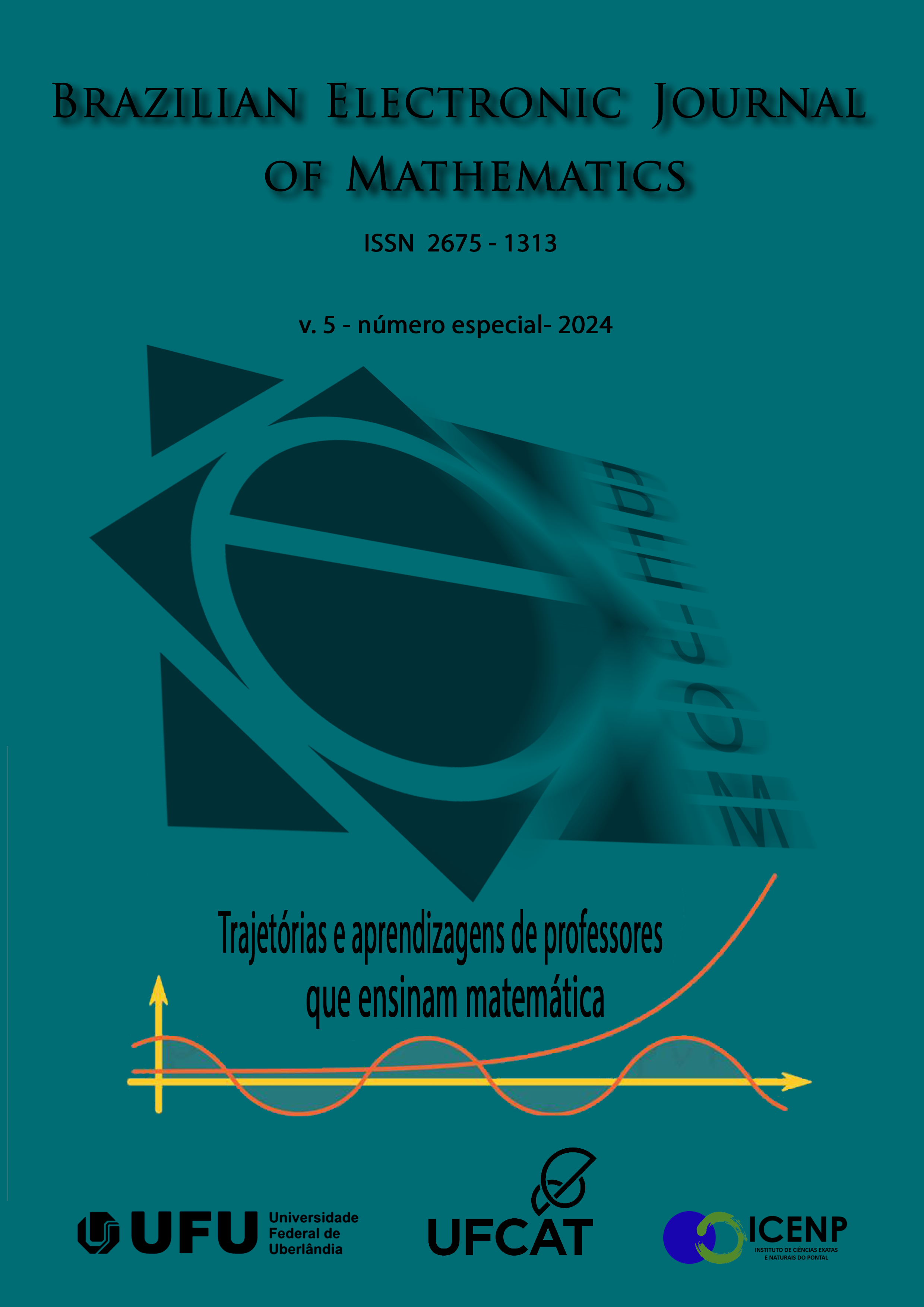Incommeasurable magnitudes and irrational numbers
DOI:
https://doi.org/10.14393/BEJOM-v5-2024-71830Keywords:
Commensurable, incommeasurable, irrationalAbstract
Some books on the history of mathematics argue that the discovery of incommeasurable quantities, around the 5th century, Before the Common Era, was followed by a crisis of logical foundations in the structures of mathematics. We noticed, from some publications and articles, that this fundamental crisis may have been a mistake or a misinterpretation of ancient writings, because, if it had occurred, it did not alter the rumors of Greek discoveries. Eudoxo's proposed solution stems from the evolution of studies that were ongoing and, two millennia later, served as the basis for the construction of Dedekind's cuts, basic to the conception of the rigorous concept of real numbers (rational and irrational). This bibliographical research work aims to revisit and resume, from the historical mathematical character, the main ideas that emerged with the emergence of incommensurable quantities and their particularities, from Greek antiquity, through their consummation that culminated in the formal idea of irrational numbers until we reach the present day. As the main contribution of this work, we highlight the presentation of new perspectives and approaches to the topic in vogue based on looks at the past through historical facts, making it possible to understand how the chains of ideas took place over time, enabling the expansion of understanding of mathematical objects and concepts today.
Downloads
References
ÁVILA, G. S. S. Análise matemática para licenciatura. 1. ed. São Paulo: Edgard Blücher, 2001.
BOYER, C. B.; MERZBACH, U.C. História da matemática. Tradução: Helena Castro. 3. ed. São Paulo: Edgard Blücher, 2012.
CARAÇA, B. J. Conceitos fundamentais da matemática. Lisboa: Gradiva, 1975.
EUCLIDES. Os elementos. Tradução: Irineu Bicudo. 1. ed. São Paulo: UNESP, 2009.
EVES, H. Introdução à história da matemática. Tradução: Hygino H. Domingues. 5. ed. Campinas, SP: Unicamp, 2004.
GARBI, G. G. A rainha das ciências: um passeio pelo maravilhoso mundo da matemática. 5. ed. São Paulo: Livraria da Física, 2007.
LEÃO, A. Euclides e a incomensurabilidade: o profundo tear das abrangências? Os sumos segredos do livro X. 1. ed. São Paulo: Chiados books, 2019.
LAUNAY, M. A fascinante história da matemática: da pré-história aos dias de hoje. Tradução: Clóvis Marques. 1.ed. Rio de Janeiro: Bertrand Brasil, 2019.
MASTIN, L. Egyptian mathematics. 2010. Disponível em: https://www.storyofmathematics.com/egyptian.html. Acesso em: 5 abr. 2023.
NIVEN, I. Números: racionais e irracionais. Tradução: Renate Watanabe. Rio de Janeiro: SBM, 1990.
OLIVEIRA, A. J. F. Dedekind e os números: antologia de textos fundacionais de Richard Dedekind. 1. Ed. São Paulo: Livraria da Física, 2022. 194 p.
PLATÃO. Mênon. Tradução: Maura Iglésia. 8. ed. Rio de Janeiro: Loyola, 2001. 120 p.
ROQUE, T. M.; CARVALHO, J. B. P. Tópicos de história da matemática. Rio de Janeiro: SBM, 2012. 467 p.
IMPERATIVO MATEMÁTICO. Tudo o que você precisa saber sobre os números reais: uma não tão breve história do espaço. 2020. 1 vídeo (38 min). Disponível em: https://www.youtube.com/watch?v=FPMkpma-4-8. Acesso em: 02 fev. 2023.
Downloads
Published
How to Cite
Issue
Section
License
Copyright (c) 2024 Fabrício Oliveira Silva, Márcio Roberto Rocha Ribeiro

This work is licensed under a Creative Commons Attribution-NonCommercial 4.0 International License.
The published articles are licensed under the CreativeCommons CCBY-NC/4.0 version. By submitting the material for publication, the authors automatically waive their copyright, agree to the editorial guidelines of the journal, and assume that the text has been properly reviewed. Simultaneous submission of articles to other journals is prohibited, as is the translation of articles published in the journal into another language without proper authorization.









